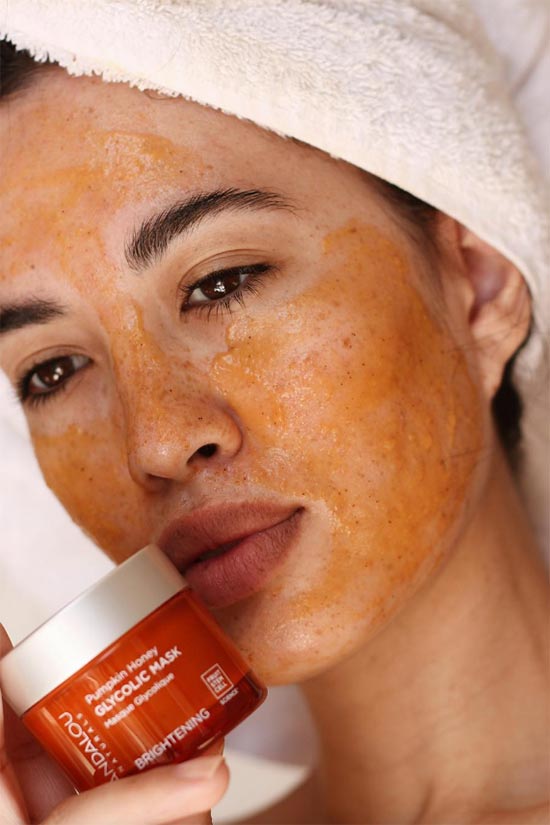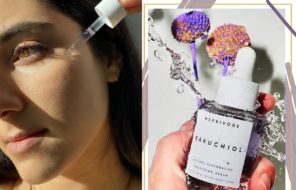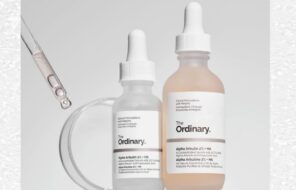Oily skin, like all skin types, is a blessing and a curse. Yes, you might find yourself breaking out more often than your dry-skinned peers, and yes, you might get shiny at the drop of a hat, but with the right skincare routine you might find that having oily skin isn’t bad at all. It’s much easier for you to achieve the dewy, glass skin look, and you don’t need to worry about your foundation caking up or catching on flakey spots.
With this article, I want to help you make the most of your oily skin – to celebrate it instead of resenting it! I’ll explain exactly what ‘oily skin’ really means, outlining its characteristics and causes. It’s not totally impossible to get rid of oily skin, but it’s not necessarily desirable – I’ll talk a bit about that, but what I’ll really focus on are the wonderful skincare ingredients that help oily skin shine with health rather than excess sebum.
I detail the best product categories to use if you have oily skin, along with the best skincare routine for oily skin in which you should use them. I also talk about the ingredients you’ll want to avoid in your skin care and makeup, and finish off with a few extra tips, dos and don’ts.
In this article:
- What Does It Mean to Have Oily Skin?
- Oily Skin Type Characteristics
- Oily Skin Causes
- How to Get Rid of Oily Skin
- Best Skincare Ingredients for Oily Skin
- Ingredients to Avoid If You Have Oily Skin
- Morning Skincare Routine for Oily Skin
- Evening Skincare Routine for Oily Skin
- Weekly Skincare Routine for Oily Skin
- Myths About Oily Skin
- Oily Skincare Tips, Dos & Don’ts
What Does It Mean to Have Oily Skin?
Oily skin is a skin type, and having it doesn’t really mean anything. Many of those who have oily skin find it very troublesome, and they often want to totally change it. This has less to do with oily skin itself and more to do with the things that tend to come with it, like a propensity to break out or the larger pore size.
However, having skin that produces a lot of oil isn’t inherently a bad thing, and more importantly, it’d be a fool’s errand to try and change it.
When we talk about facial oils the material we’re actually talking about is called sebum. Sebum is produced by our sebaceous glands, which are usually attached to the hair follicle (a.k.a. the pore – that’s right, they’re the same thing). The sebum they produce travels up through the hair shaft and is deposited to the top layer of the skin. Those with oily skin have overactive sebaceous glands, meaning that their sebaceous glands work overtime to produce more oils than is actually necessary.
Sebum is actually critical to having healthy skin! It is made up of various lipids that work together to help maintain the skin’s barrier functions. It fills in the gaps between dead skin cells in the stratum corneum to prevent bacteria and other pathogens from getting into our body, it helps keep the skin a little acidic so it is extra inhospitable to bad microbes, and it delivers protecting antioxidants to the skin. Not having enough sebum is just as troublesome as having too much of it!
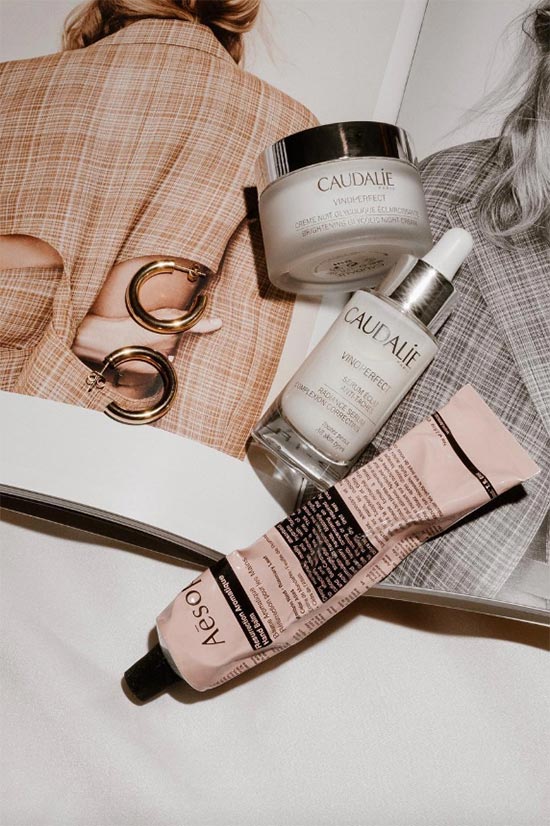
Oily Skin Type Characteristics
If you aren’t sure whether you have oily skin or not, pay attention to the following signs:
• Oil Production
The main characteristic of oily skin is that it produces a lot of sebum, which is easiest to describe as “oil” even though it’s a bit more complex than that. Basically, if your skin looks shiny or greasy only a few hours after you’ve wiped, blotted, or washed it then you have oily skin. If it’s only oily in some parts of your face then combination-oily would be the better descriptor.
• Large Pores
Those with oily skin usually also have larger pores (i.e. hair follicles), particularly on the parts of their face where they are the oiliest. For most people that would be the T-zone. The larger pores also mean that skin appears more textured, which is a big complaint of many people with oily skin.
• Prone to Breakouts
Those with oily skin are likelier to suffer from clogged pores and acne. This is because one of the factors that lead to breakouts is oil build-up in the follicles or pores. However, that is not all: build-up of dead skin and grime, presence of acne bacteria, and the skin’s propensity to inflammation are all factors in your chances of breaking out, with many other subfactors relating to them including hormones, diet and hygiene.
There are many people with oily skin who do not break out at all, while others are able to control their breakouts with the help of a good skincare routine, diet and/ or medication. Lastly, it’s important to point out that there are also plenty of people with dry, normal, and combination skin types that also suffer from acne!
• Thicker Skin
Oily skin is usually a little thicker than other skin types. While on the one hand this might mean your skin is more prone to texture issues, on the other hand it also means your skin is more resilient! Those with oily skin can usually tolerate harsher products and environments more easily than those with dry skin, although that doesn’t mean that you shouldn’t be gentle with your skin.
• Wrinkle Resistance
It also appears that because of the skin thickness and abundance of protective sebum, those with oily skin often develop fewer wrinkles than their counterparts with dry skin! See, oily skin isn’t all bad! This is particularly true when it comes to deeper forehead wrinkles – thin areas of the skin where there are few oil glands, like around the eyes, are going to develop crow’s feet no matter the skin type.
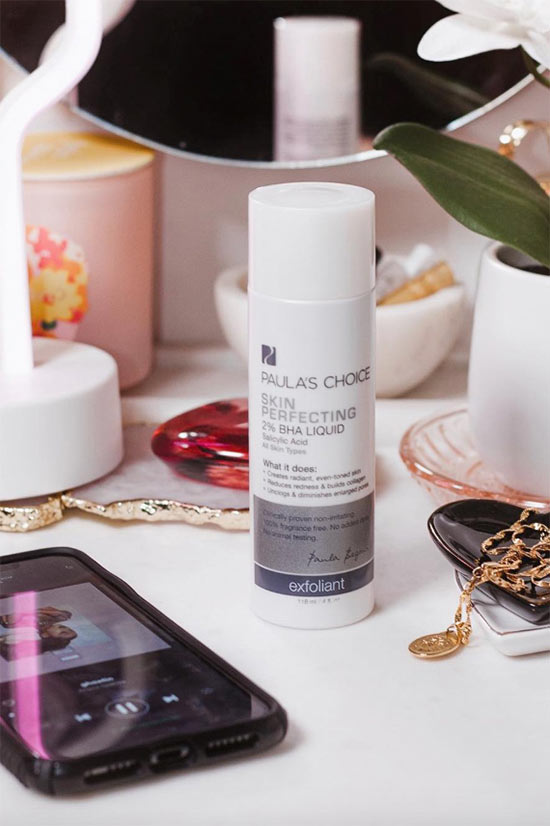
Oily Skin Causes
Those with oily skin are often the recipients of well-meaning advice and uncalled for lectures about how eating too much oily foods or chocolate is the cause of their skin type. I give you permission to totally zone out next time that one aunt corners you at the family reunion, because the fact of the matter is that the causes of oily skin probably have very little to do with your diet, exercise regimen, or anything else beyond the following immutable factors, which are mostly related to one another.
• Genetics
Most people are just genetically predisposed to having oily skin. If everyone in your family has overactive sebaceous glands then yours are probably going to be overactive as well. It’s as simple as that.
• Hormones
Hormones are definitely a factor in whether a sebaceous gland will be overactive or not, with androgen, the male hormone, being linked to increased sebaceous gland activity. This is why acne usually pops up during puberty, when the body increases production of androgen. Various hormone-related conditions as well as hormonal medication can have an influence over how much sebum our skin produces.
• Age
The way our bodies produce hormones changes as we age, and as a result our skin may go through changes in how it produces oil throughout our life. We tend to be oiliest in our teens, and once puberty ends our oil production doesn’t change. For women, oil production will decrease once we hit menopause.
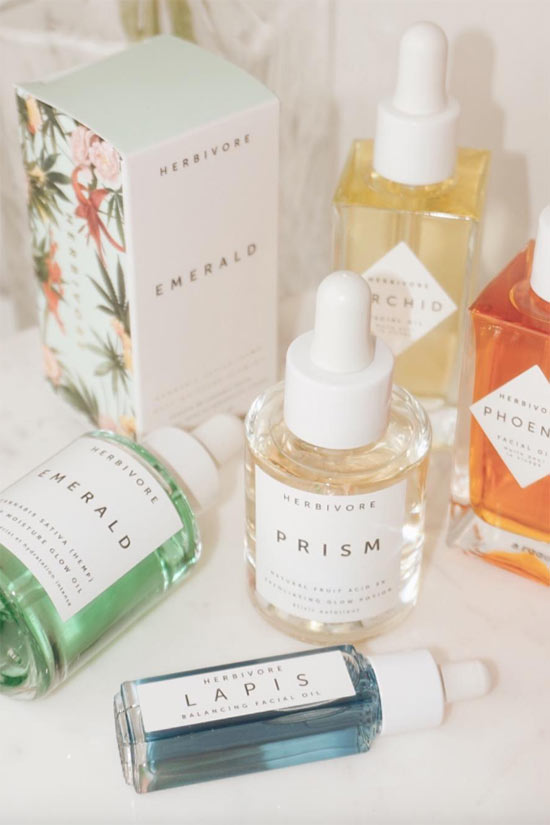
How to Get Rid of Oily Skin
While it’s almost impossible to change our skin type, we can definitely mitigate some of the issues associated with it. Unfortunately, the steps folks with oily skin often take to try and change their situation are exactly what ends up harming their skin in the long run! Instead of working against your skin by aggressively washing and scrubbing it, I think it is better to work with it by being gentle, loving and caring.
If your oiliness is extreme and is truly impeding your quality of life then there is one way to effectively reduce sebum production in the skin. Consider it the nuclear option since it will annihilate your skin’s oil production capabilities and might make it way too dry.
This option is seeing a dermatologist and getting a prescription for isotretinoin, an oral version of vitamin A that is often referred to by its former brand name, Accutane. Taking Accutane is not a decision one should make lightly and it definitely requires the oversight of a physician. You can learn more about Accutane’s benefits and drawbacks here.
Taking hormonal medication (usually birth control pills containing estrogen and a progestin) may also help by decreasing androgens, but once again, you will definitely want to consult a doctor before seeking this kind of treatment.
For most people with oily skin the best route to take is a slow and nurturing one. Take care of your skin with a great skincare routine like the one I detail further down in the article, and look out for products with skincare ingredients that are great for oily skin.
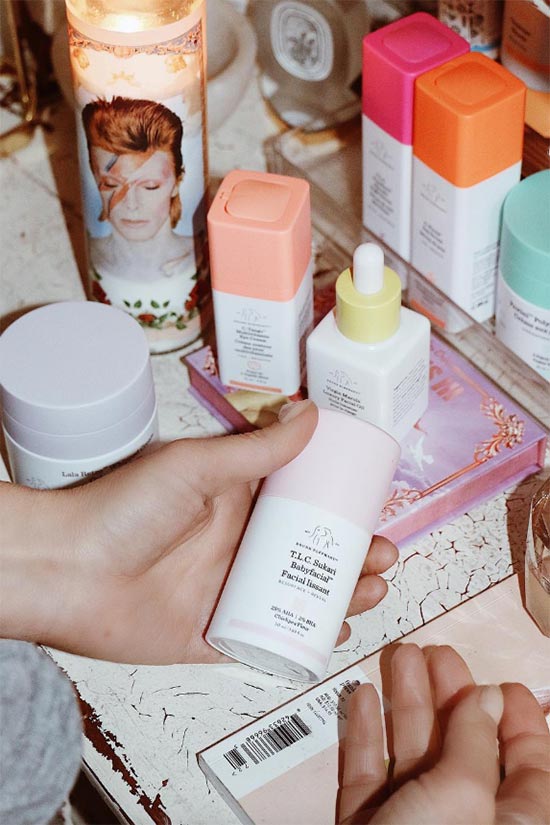
Best Skincare Ingredients for Oily Skin
If you want to adopt a healthy skincare routine and control your oily skin, consider getting oily skin products featuring the ingredients we discuss below.
• Niacinamide
Were I a better poet I would dedicate a sonnet to niacinamide. It is also sometimes known as nicotinamide or vitamin B3. All skin types can benefit from this ingredient, but it should be indispensable to those with oily skin.
Niacinamide is remarkably gentle and yet it seems to have the incredible ability to somewhat reduce oil production. The method by which it does this is poorly understood, but this effect has been recorded by scientists as well as by the thousands of adoring fans of this ingredient. It’s not drastic enough as to change your skin type, but it will still be impactful. In addition to that, niacinamide is also antioxidant with skin-brightening, soothing and anti-aging effects.
• Salicylic Acid
This is the second ingredient that probably deserves a sonnet from me. Salicylic acid, also sometimes referred to as BHA or beta-hydroxy acid, is my favorite chemical exfoliant for everyone, but especially for those with oily or acne-prone skin. Regular chemical exfoliation is an excellent way of keeping the skin smooth, clear, and receptive to other skincare ingredients, so it’s an important part of every skincare routine.
Why I think salicylic acid is extra special is because, unlike glycolic acid (a.k.a. AHA), it can break down oils so, as Paula Begoun likes to put it, it can exfoliate within the pore. This allows it to dislodge build-up of dead skin cells not only from the surface of the skin but also from deeper inside it, making it an excellent declogging ingredient.
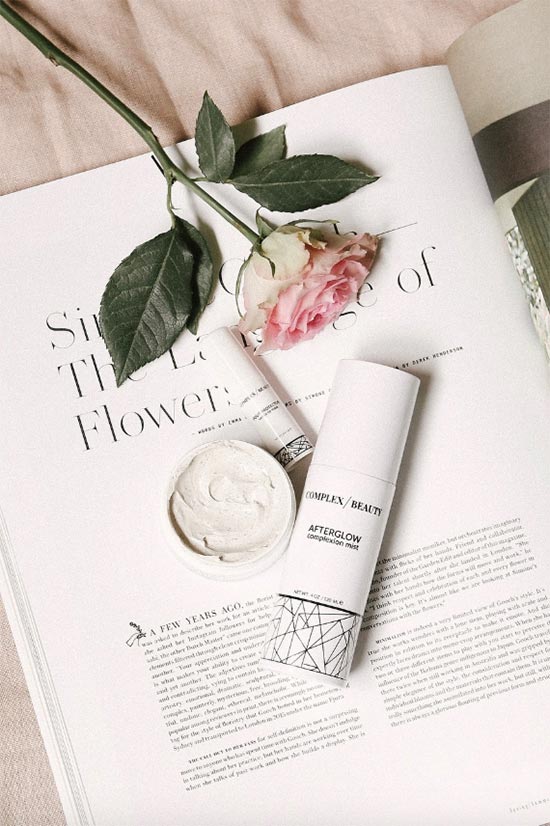
If in addition to being oily you’re also acne-prone there are two more big benefits: salicylic acid is anti-inflammatory, so it can calm down red and swollen pimples, and it is bacteriostatic, so it can help control some of the acne bacteria that might be present on your skin. It is not as effective against the acne bacteria as benzoyl peroxide, but many people find that it’s more than enough to treat their acne.
You will see salicylic acid used at 2% in most products, although if your skin is sensitive you might prefer a lower percentage. The old belief was that salicylic acid would only be effective at a low pH, but more recently scientists have found that it can still help the skin just as well and with less irritation even at a pH of 6.54!
As with any resurfacing product, it is best to introduce it into your oily skincare routine slowly – first once a week, then twice a week, until you work your way up to a sweet spot, which for many people can be as often as once a day.
• Vitamin A
Not all forms of vitamin A were created equal. The ones you see in regular skin care most frequently are the fairly gentle retinyl palmitate and the slightly stronger retinol. There is also adapalene, which is marketed as Differin in the US and is considered an over-the-counter medication, and tretinoin, which requires prescription.
The main difference between the various forms of how they work is how strong they are. The stronger the vitamin A, the more radical its effects but also the likelier it is to irritate the skin.
Vitamin A works by increasing the cell turnover rate. This helps improve a variety of issues related to skin texture, including enlarged pores – the issue that is likeliest to concern those with oily skin. Tretinoin and adapalene are actually most frequently recommended as acne treatments, so that’s another bonus.
Beyond that, Vitamin A is also a very effective anti-aging treatment with an ability to both prevent and reverse surface signs of premature aging by increasing collagen synthesis. After all, just because you have oily skin doesn’t mean you’re not allowed to be concerned about signs of extrinsic aging.
If you have sensitive skin you could probably still use products with retinyl palmitate and retinol, while adapalene and tretinoin both have the potential to irritate your skin.
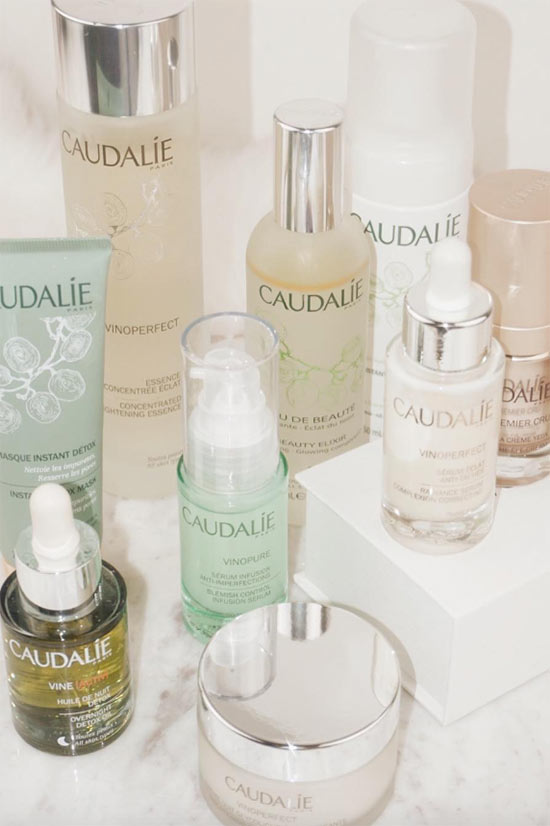
• Azelaic Acid
Azelaic acid is the new kid on the block, and you should definitely give it a try if salicylic acid and vitamin A are too harsh for your sensitive, oily skin. Like salicylic acid, azelaic acid is also an exfoliant albeit a much gentler one.
Even at 20% you’re not going to get the same level of exfoliation as you would with salicylic acid. However, azelaic acid is still a formidable skincare ingredient. Its anti-acne effects can be compared to benzoyl peroxide, while its skin-soothing ability is parallel to none (except maybe centella asiatica).
It has only recently become available in regular cosmetics products. Previously it was only available by prescription under the brand name Finacea, most commonly as a treatment for rosacea.
• Witch Hazel
Witch hazel has been around for decades if not centuries, but it still holds up as one of the best astringent and anti-inflammatory skincare ingredients. I wouldn’t consider it an “active ingredient” but I still respect it. It is great for temporarily tightening the skin and alleviating inflammation, which is why it’s especially nice for soothing acne and for momentarily tightening the pores.

• Willow Bark Extract
Willow bark extract is great for oily skin because it’s very rich in salicin – the gentle, anti-inflammatory precursor to both salicylic acid and aspirin. It is a fabulous ingredient in both toners and serums to soothe the skin and to help shrink pores.
• Clay & Charcoal
The occasional clay mask can act like a vacuum cleaner, removing oil build-up from the oily skin and also helping with clogged pores – especially when using in conjunction with salicylic acid. The kinds of clay you’ll see used in skin care most frequently are kaolin clay and bentonite clay.
Charcoal is also becoming very popular. It works similarly to clays, with clay and charcoal often used in the same formula. I don’t believe they are necessary for daily skincare routine for oily skin, but once or twice a week in a face mask can be nice.
• Oils with Linoleic (Omega-6) and Alpha-Linolenic Acid (Omega-3)
Not all facial oils were created equal, and the word oil-free should no longer be what pulls you towards an oily skincare product. The fatty acid composition of an oil will impact how heavy or light it feels, as well as how likely it is to clog pores. Surprisingly, whether an oil feels greasy or not doesn’t have much to do with whether it’ll clog pores or cause breakouts.
Anyway, if you have oily or acne-prone skin you can actually benefit from oils rich in linoleic and alpha-linolenic acids. These fatty acids have a skin-soothing and acne-preventing effect, and they also help to soften the skin and make it more resistant to damage.
You can find linoleic acid as an ingredient in skin care all on its own, but you can also look for oils that are rich in it, like sunflower oil, safflower oil, grape seed oil, evening primrose oil, and the list goes on. Oils that are also rich in alpha-linolenic acid include flaxseed oil, sea buckthorn oil, rosehip seed oil and walnut oil.
• Vitamin C
I love vitamin C and believe there is no skin type that won’t benefit from it. It doesn’t hold any special benefits to those with oily skin but it also holds no detriments. It’s a wonderful anti-aging ingredient that increases skin luminosity, prevents oxidative damage (which can also help prevent breakouts), and helps eliminate hyperpigmentation, which also includes post-acne marks.
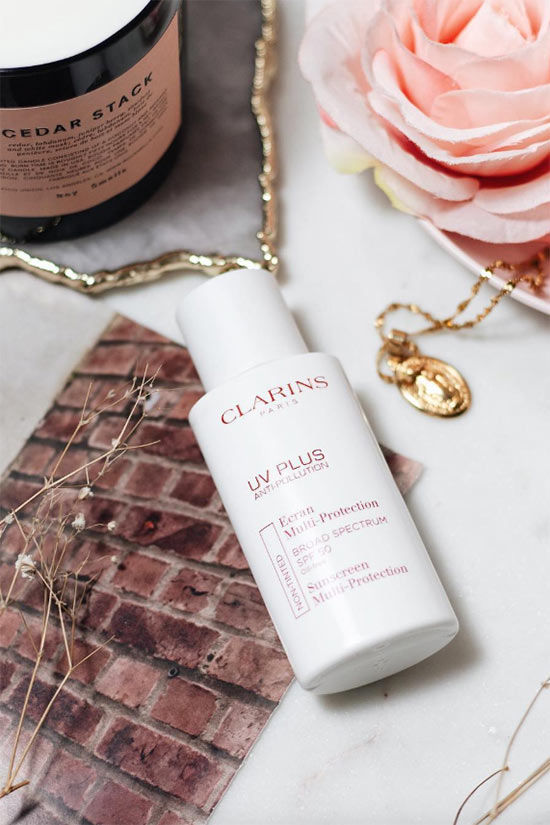
Ingredients to Avoid If You Have Oily Skin
In order not to worsen the condition of your oily skin, make sure to stay away from products containing any of the ingredients mentioned below.
• Occlusive Oils and Waxes
While a heavy oil will not necessarily break you out, if you have oily skin it will definitely make you feel even oilier, which can be especially annoying in the daytime. Mineral oil is a classic example of an ingredient that is not comedogenic (i.e. does not cause breakouts) but does sit on top of the skin and looks greasy.
Other ingredients that are known to make oily complexions feel greasier include: lanolin, petroleum jelly, paraffin wax, and beeswax. If these ingredients are present towards the end of the ingredients list (meaning they are in the formula at a fairly small concentration) then you can give it a try, but if they are near the top then avoid them, particularly in leave-on formulas.
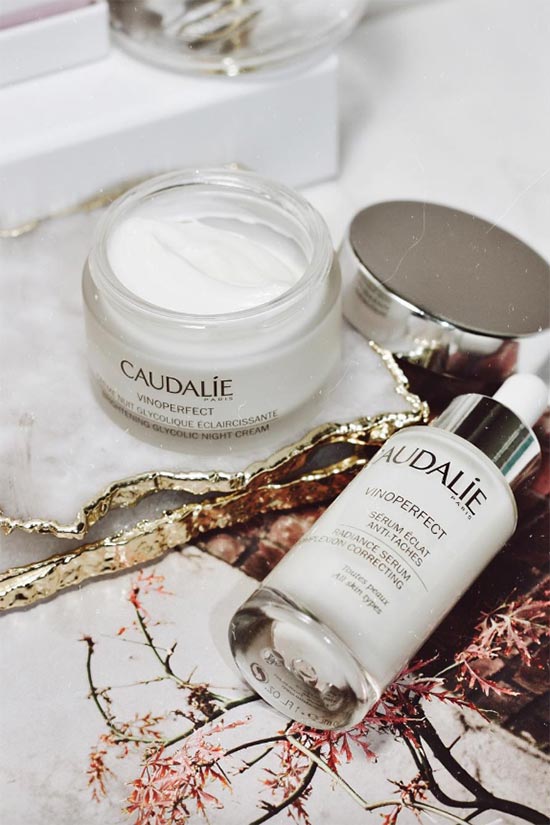
• Denatured Alcohol
I’ve mentioned this already, but generally products with alcohol (especially toners) are way too stripping and dehydrating for the skin. While they will certainly tighten your pores momentarily, they will also remove moisture from your skin.
You can make exceptions with certain creams that might have some alcohol in them just to thin out their texture, but astringents and toners with alcohol are going to be too harsh.
• Sodium Lauryl/ Laureth Sulfate
Also known as SLS and SLES, these sulfates are a type of detergent that you will often find in cheaper cleansers. These sulfates are remarkably effective at breaking down oils – too effective. They end up stripping the skin of all traces of oil and usually leaving it quite dehydrated and tight-feeling.
There are plenty of cleansers with gentle mixtures of surfactants like Coco Betaine and Decyl Glucoside that do a great job of removing excess oil from the skin without leaving it overly dry.
• High-pH Products
Our skin functions most healthily at a pH between 4.5 and 5.5. Any higher and you can expect your skin to become easily irritated and more prone to breakouts. It will feel uncomfortably tight, and sebum will sit visibly on its surface, so you’ll end up looking even oilier despite feeling very dry.
This is why I harp so much on the importance of using low-pH cleansers. You definitely want to avoid regularly using products that will increase your skin’s pH, since while the skin will eventually bounce back to normal, it can’t do so if its pH is disrupted on a daily basis.
The ingredients to look out for are soaps and saponified oils, especially as the main ingredients in a cleansing formula. Clay masks often also have a higher pH, but the ones I recommended on the list are actually fairly acidic. Additionally, since they are not used on a daily basis they are not as disruptive.

Your Morning Skincare Routine for Oily Skin
To take proper care of your oily skin, this is how you should start your day!
Step 1: Cleanse
I am normally of the opinion that cleansing in the morning is totally optional, but those with oily skin will probably want to remove the layer of sebum their skin will have produced overnight.
A gentle, non-stripping face wash for oily skin with a low pH would be the way to go, as its only purpose should be to remove oil build-up and to prepare the skin for the rest of the oily skincare routine. You can look for gel, foam or milk cleansers, as you will likely find that cream, balm and oil cleansers are a little too oily for you in the morning. As always, I recommend staying away from soaps and sulfates in your cleanser.
Simply massage your cleanser into your skin using circular, upward motions, and then rinse it away with water. I always recommend one final wipe with a face cloth to ensure all remnants of cleanser are truly gone.
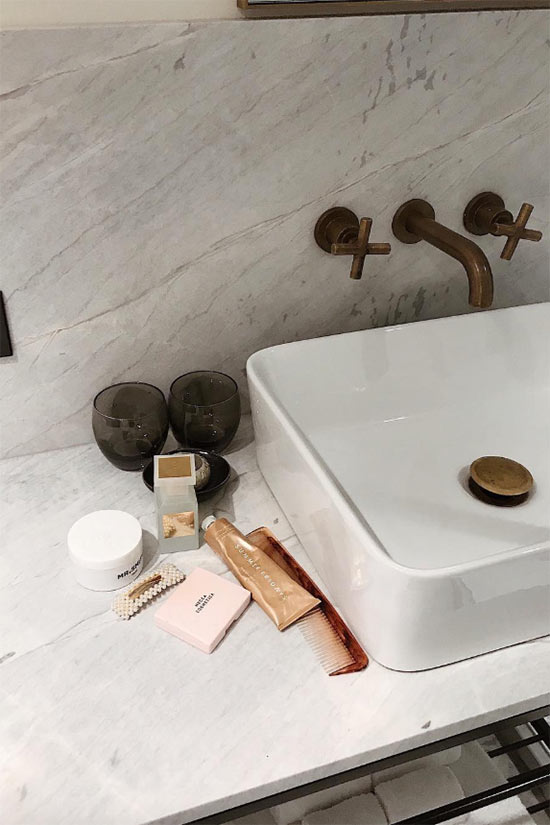
Step 2: Tone
If your skin doesn’t produce too much oil at night you might decide to skip a cleanser altogether, in which case a toner-saturated cotton pad will help lightly cleanse and refresh your skin. When choosing a toner, look for one that will have a specific purpose beyond vague “toning”.
If you will be using moisturizing products (think hydrating serums or a moisturizer with SPF) later on in your AM routine, then focus on choosing a toner that will load your skin up with actives like resurfacing salicylic acid or mattifying niacinamide. Avoid toners with alcohol, as they will strip the skin of moisture and end up dehydrating it.
If you would rather stick to lighter products for the rest of your oily skincare routine that don’t moisturize much but maybe are richer in active ingredients, then opt for a more hydrating toner. Toners are a great hydration step, as they are light but often contain very nourishing and hydrating ingredients – especially Korean toners.
Whichever toner you do choose, soak a cotton pad with it and then wipe it on your skin in circular motions, from the bottom to the top of the face. Unless your toner contains pH-dependant actives like salicylic acid (in which case you can wait 10-20 minutes), you can move straight on to the next step while your skin is still damp.

Step 3: Actives and Serums
For some people with oily skin, using both a serum and a toner can feel like too many layers of products on the skin, so feel free to choose just one or the other.
The product you choose should depend on what your skin needs – you might want something with niacinamide to help control facial oils, you might want a gel with a form of vitamin A like to help improve skin texture, or a product with vitamin C to help stabilize your sunscreen.
Serums tend to include more actives or higher concentration of actives than toners, and they also have a slightly thicker texture that is still lighter than a cream. If you’ll be using both a toner and a serum, opt for different active ingredients in each one. For example, if your toner contains salicylic acid, then you can choose a serum with niacinamide.
With serums, a small quantity goes a long way, so pour a small amount into the palm of your hand, rub both hands together, and then apply it to your skin in circular, upward motions. Use the palm and the length of your fingers to cover the entire face quickly and to give yourself a gentle massage.
Step 4: Spot Treatment
If, in addition to oiliness, you also experience breakouts, then you may want to apply an acne spot treatment only to the areas of your face where you break out. A spot treatment with benzoyl peroxide or tea tree oil should go on your skin after you’ve applied your serum, while a spot treatment with salicylic acid should be applied before a serum.
Only apply it to the areas where you commonly break out, by gently rubbing it into the skin with the tip of your fingers. The amount you will need depends on how much space you need to cover. Give it a few moments to sink in and then move on to the next step.
Step 5: Sunscreen or Moisturizer with SPF
No matter your skin type, using sunscreen every morning is critical even if your only sun exposure occurs when you sit by the window at your home or when you walk from your car to your office. The sun is the primary cause of extrinsic aging, not to mention that exposure to it without protection heightens your risk of melanoma.
Those who have oily skin often find that sunscreen just feels too greasy or heavy, which is why I have recommended a few sunscreens that are light enough not to clog pores or feel greasy. All of these sunscreens are adequate replacements for moisturizer, especially if you’re also using a hydrating toner or serum.
Whether your source of sun protection is a sunscreen, a moisturizer with SPF, or a primer with SPF doesn’t really matter as long as you use around a ¼ teaspoon on your face to get full protection.
The best way to apply sunscreen is in two layers of ⅛ teaspoon, waiting a few minutes in between to allow the first layer of sunscreen to absorb. If you will be applying a mattifying primer or makeup, make sure to wait 15-30 minutes to allow the sunscreen to really sink into your skin, so that once you apply makeup it doesn’t dilute or remove your sunscreen.

Step 6: Mattifier
One of the best ways to control oily skin throughout the day is to use a mattifying primer. These products sit on the cusp between skin care and makeup, since their primary purpose is to keep the skin from looking shiny in the long term.
They create a barrier layer over the skin (one that also locks moisture in) that does not allow facial oils to escape. They also have a blurring effect that makes the skin appear matte as well as more even and less textured.
Some of these mattifiers have an SPF so they also act as a sunscreen, though others don’t and should be applied on top of sunscreen. If your mattifier isn’t also your main SPF then you only need to use a pea-sized amount. Smooth it on your skin, starting with the nose and forehead and then working it outwards towards the edges of the face.
Your Evening Skincare Routine for Oily Skin
Before going to bed, pamper your oily skin with the right products to make it look radiant and fresh in the morning.
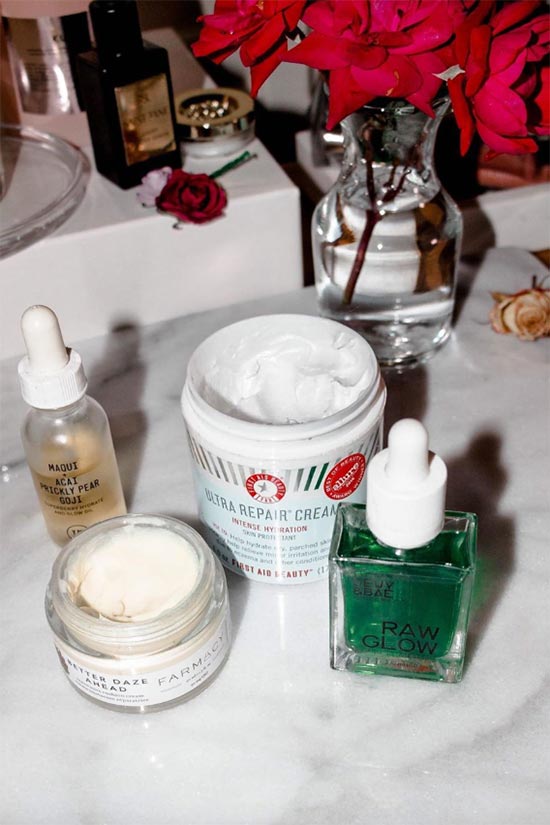
Step 1: Cleanse
Cleansing in the evening is critical for maintaining the health of oily skin. We’re exposed to so much grime and pollution throughout the day, not to mention that the sunscreen from the morning and any makeup we might be wearing should be removed. Your evening cleanse should be thorough enough to remove your sunscreen completely, as well as anything else that might have found its way to your skin.
Double cleansing with an oil cleanser is a fabulous habit to get into, even if you have oily skin. After all, nothing dissolves oils as well as other oils. If you’re nervous about using oils on your skin, then you can try micellar water for your first cleanse instead.
For micellar water, apply it with a cotton pad and then rinse, while an oil cleanser is best massaged into the skin while the skin is dry. It can then be emulsified with a bit of water, and then rinsed away or wiped off with a damp face cloth.
Your second cleanse can be done with any gel, foam or milk cleanser. You can use the same cleanser you would in the morning, and with the same method: massage it into damp skin until it lathers, and then rinse it away or wipe it off with a damp face cloth. It will totally clean your skin and will also get rid of any residue from the oil cleanser.
Step 2: Tone
Once again, I only see toning as a useful step if your toner contains ingredients that are particularly useful for your skin. In other words, this step is optional, but do keep in mind that it can be a great step for delivering beneficial ingredients to the skin, including antioxidants, resurfacers, and humectants.
Step 3: Essences, Serums, and Actives
Splitting your active-laden serums between morning and evening is a great way of putting together a great oily skincare routine. While some actives, like niacinamide, can be used both morning and night, resurfacing actives like vitamin A, vitamin C, and chemical exfoliants should only be used once a day, or even every other day.
For example, if you use vitamin C in the morning (which is a good idea since it’ll help stabilize your sunscreen), then you can use salicylic acid at night. If you don’t use vitamin C but do use retinol, then it’ll be better to use the salicylic acid in the morning, and then the product with retinol at night.

Step 4: Spot Treat
Much like in the morning, you may want to apply a spot treatment to your skin if you happen to break out in addition to having oily skin. Most spot treatments are best applied after serums and actives.
Step 5: Moisturize
Your final step should be one that seals in all of the actives and humectants that were present in your previous oily skincare steps – especially if you live in a dry climate. You can do this with a well-formulated moisturizer, a light overnight mask or, if your previous steps included enough humectants, a non-comedogenic facial oil.
The amount of moisturizer you’ll need depends on how many other steps you had in your routine and how dehydrated your skin is at the moment. Start by massaging a pea-sized amount into your skin in a gentle, circular motion, and apply more if it sinks into your skin too quickly.
Weekly Skincare Routine for Oily Skin
I’m firmly of the belief that what you do on a daily basis has a much greater impact than what you do just once or twice a week. That being said, masking can be a really nice treat, with clay-based masks being particularly great for those with oily skin since they give a deep clean and really get within the pores. You can mask whenever you find the time – whether morning, evening or middle of the day works better is totally up to you.
Step 1: Cleanse
Cleanse as thoroughly as necessary depending on the time of the day and what your skin has been put through. You will probably need a fuller cleanse in the evening, while a gentle foam cleanser should be enough in the morning. Make sure your skin is thoroughly clean and free of cleanser by wiping your face with a damp face cloth when done.
Step 2: Exfoliate
I recommend always chemical exfoliants over physical ones since they give a more thorough exfoliation while being gentler. Salicylic acid is, of course, my favorite exfoliant for oily skin.
Before masking, salicylic acid actually helps improve the declogging abilities of your mask since it exfoliates and dislodges things from within the pores. A toner or oil-free serum with salicylic acid would be the best treatment to use. Apply it to your skin with the palm of your hands or by wiping it on with a pad, and let it sit for about 10-20 minutes.
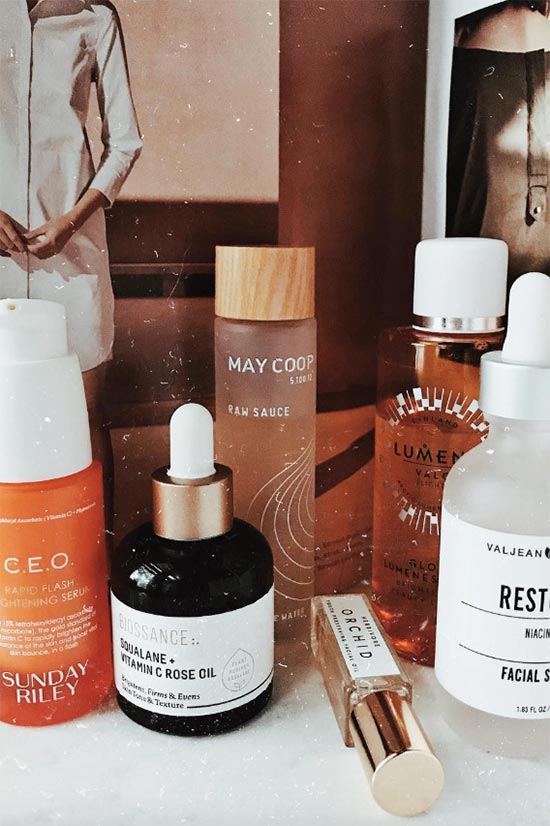
Step 3: Mask
The best face masks for those with oily skin are pH-balanced ones that contain a bit of deep cleaning and mattifying clay or charcoal along with some hydrating ingredients. A lot of clay masks don’t contain any hydrating ingredients, so they end up making the skin feel too dry and tight. It’s always possible to follow a more drying clay mask with additional hydrators, but I think it’s better to just choose a mask that does it all.
Apply your mask of choice to your skin with the help of a clean, flat brush. Wipe it on your skin in upward motions, starting from the bottom of the face and working your way up.
Once the mask is evenly applied all over your skin (except for around the eyes), let it sit for 10-20 minutes. Once the time elapses, rinse it off with water and then wipe away with a damp face cloth or some cotton pads.
Step 4: Rest of AM Routine
Once the mask is gone, finish it off with the rest of your oily skincare routine. If it’s morning then use your toners, serums, spot treatments, and most importantly, an SPF product.
Step 5: Rest of PM Routine
If it’s evening time then finish off your routine with your toners, essences, serums, spot treatments, and a final layer of moisturizer or overnight mask.
Myths About Oily Skin
• Oily Skin Is Caused by Poor Hygiene
While poor hygiene can definitely increase your chances of breaking out, the fact of the matter is that oily skin is genetic and it is not a marker of uncleanliness. While your impeccable skincare routine might help you deal with the sebum your oil glands produce, it’s not going to stop the actual oil production.
In the same vein, lots of people who break out take wonderful care of their skin, so breakouts are also not a sign of dirtiness. Let’s make that myth die!
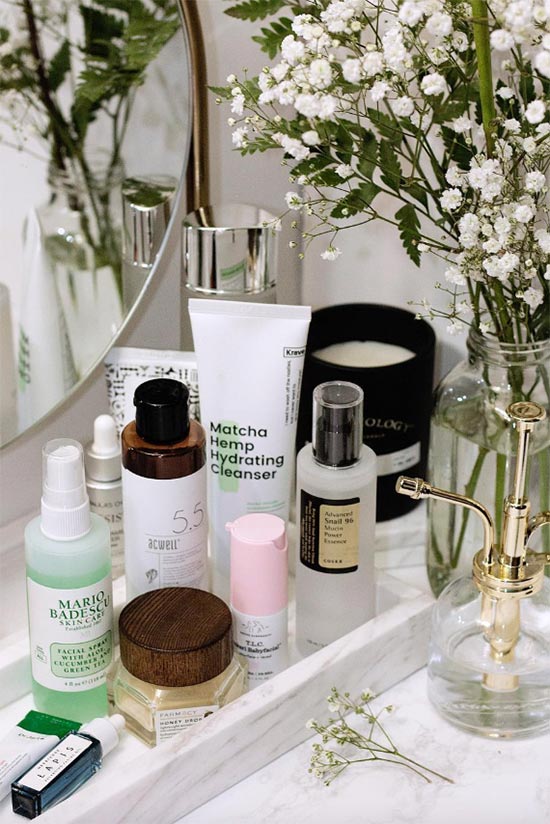
• It Is Caused by a Poor Diet
One of my least favorite myths about oily skin is that it is caused or exacerbated by eating too much of whatever the media has decided to vilify at a particular time. One week you’ll hear oils are the issue, the next week chocolate will be the culprit, and the following one the issue will be gluten or dairy.
However, there is no clear correlation between diet and sebum production levels, beyond the shakey understanding that certain diets impact insulin levels.
While sticking to a low-glycemic diet filled with fruits, veggies and good fats is always a good idea, the myth that a poor diet is the main cause of oiliness or breakouts is a pernicious one, since the real reasons are much more varied and complex.
The connection between diet and skin oiliness is unlikely, since genetics are the key factor, while the connection between diet and acne is poorly understood. Well-meaning advice can actually be pernicious, because it makes people with oily skin feel guilty for something that they really cannot control.
• A Good Scrubbing Will Get Rid of Your Oily Skin
This is a very dangerous myth! Lots of folks with oily skin, especially young ones, have been handed a bar of soap and told “get thee scrubbing!” only to end up with irritated skin that feels simultaneously super dry and also very oily.
Keeping the skin clean is important for all skin types, but it’s important that the cleansing is non-aggressive and with a very gentle product like one of the many cleansers I recommend. Otherwise, you risk irritating or dehydrating your skin, which will make it feel tight and uncomfortable but won’t actually stop sebum production.

• Moisturizing Will Get Rid of Your Oily Skin
This myth is well-meaning, so I’m not going to dispel it as emphatically as the other myths. While is it important to keep oily skin hydrated and moisturized, doing so will not change your skin type.
The logic was that if the surface of the skin is hydrated and nourished then it’ll signal to the sebaceous glands that they don’t have to produce so much sebum anymore.
While excess facial sebum very well might be more noticeable on dehydrated or compromised skin (which is the state the skin can easily reach if it’s not moisturized), starting to moisturize will not cause the sebaceous glands to produce less oil and it won’t change your skin type. Your skin will definitely look and feel better if you keep moisturizing, so don’t take this as a suggestion not to moisturize!
Oily Skincare Tips, Dos & Don’ts
- Don’t over-cleanse! Cleansing too often or with overly harsh cleansers is not going to make your skin less oily – it’s only going to irritate and dehydrate it!
- Do moisturize your skin! Keeping it nourished with ingredients that won’t clog your pores or feel heavy will make your oily skin feel smooth, strong and glowy rather than overly greasy.
- Use blotting sheets throughout the day to absorb the excess oil your skin produces without disrupting your makeup or irritating your skin.
- Patch-test products for a few days on your arm, and then introduce them into your oily skincare routine slowly and one at a time. This is even more important for products high in active ingredients, as they are likely to cause irritation, breakouts or allergies.
- Remember that your mileage may vary. I recommend a lot of different products and active ingredients in this article with the understanding that not all of them will necessarily work for you, although I did choose ones that usually do work for those with oily skin. Once again, this is why patch-testing and introducing products one at a time is so important.
- Hair products matter! Thick hair mousses or shampoos that are not adequately rinsed away can be acne-causing culprits.
- Part of skin hygiene is also keeping everything that comes in contact with your face clean, including your phone, pillow cases, large headphones, etc. This is even more important if you have acne-prone skin!
Photos via @nikki.cruz, Instagram

